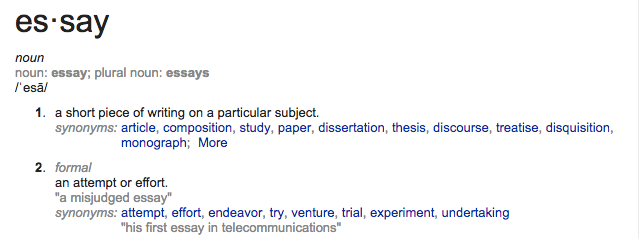Yes, routines are integral to performing at a high level, but how do you know when to stop tweaking your routine?

Here’s a disclaimer for the reader: unlike many other articles in the genre, I’m not going to claim that I have an answer to the title question. Rather, this is an essay — in the truest sense of that word. It’s an attempt, a venture, a trial.

In Greg McKeown’s seminal book Essentialism, he illustrates the importance of a routine for high-performers by telling the story of the routine of 8-time gold medalist swimmer Michael Phelps (bear with me, it’s wordy
Two hours before a race Michael Phelps would conduct the exact same warmup swim every time, in the exact same order. After the swim he would dry off, put on his headphones and sit on the massage table. Always sitting, never lying down.
From this point forward he would not speak to his coach or anyone else until after the race was over.
At 45 minutes before the race, he would get dressed for the race. At 30 minutes before, he would go to the warmup pool for a 600 meter swim.
At 10 minutes before the race he would walk to the ready room and find a place where he could sit alone. He would place his goggles on one side and his towel on the other.
When his race was called, he would walk to the blocks. He always approached the blocks from the left side. He would dry the block every time, perform the same two stretches in the exact same order always with the left leg first. Then he would remove the right earbud.
When his name was called he would remove the left earbud.
Phelps also had a routine for what to think about every night before going to sleep, and the first thing in the morning when he awoke.
He called it “watching the video tape,” and it was a visualization of the perfect race in slow motion. Every detail from getting on the blocks, to every stroke until he won the race.
During practice, when his coach wanted to challenge him he would simply say, “push the video tape.”
So, by the time Phelps started a race he was more than halfway through a routine in which he had been successful every step of the way. The race itself was simply the final step of a flawless performance.
This is a powerful testimony on how important and beneficial developing a routine can be. But if you’re anything like me, you already buy into this — so that’s not the issue. The issue is, you find yourself constantly tweaking your routine, and you’re not sure when to stop. When is your routine such that it will deliver Phelpsian results?
That’s what I’m unsure of.
You see, I’m a tweaker. I adopt cool systems that I hear about, and I tweak them. It’s what I do.
When I first read David Allen’s Getting Things Done, my first order of business was to try every task and project management software out there — tweak all of the settings, use different options. This would go on for weeks, and I’d never end up getting anything done.
Obviously, that’s no good. But say I’ve got a routine as strict as Phelps’s above. I’ve got it timed and precise. Only I don’t have any gold medals. In short, what if I have a solid routine, but I’m just not moving up in the world as fast as I’d like? What then?
Does my routine need to be tweaked? If so, in what way? And if I spend too much time tweaking my routine, won’t that just sabotage my efforts to achieve my goals?
I’m really wondering. Since it’s doubtful that anyone reading this is insanely successful, I’m interested in hearing from anyone currently struggling with this. As you try to build a routine, how do you know when to stop tweaking?